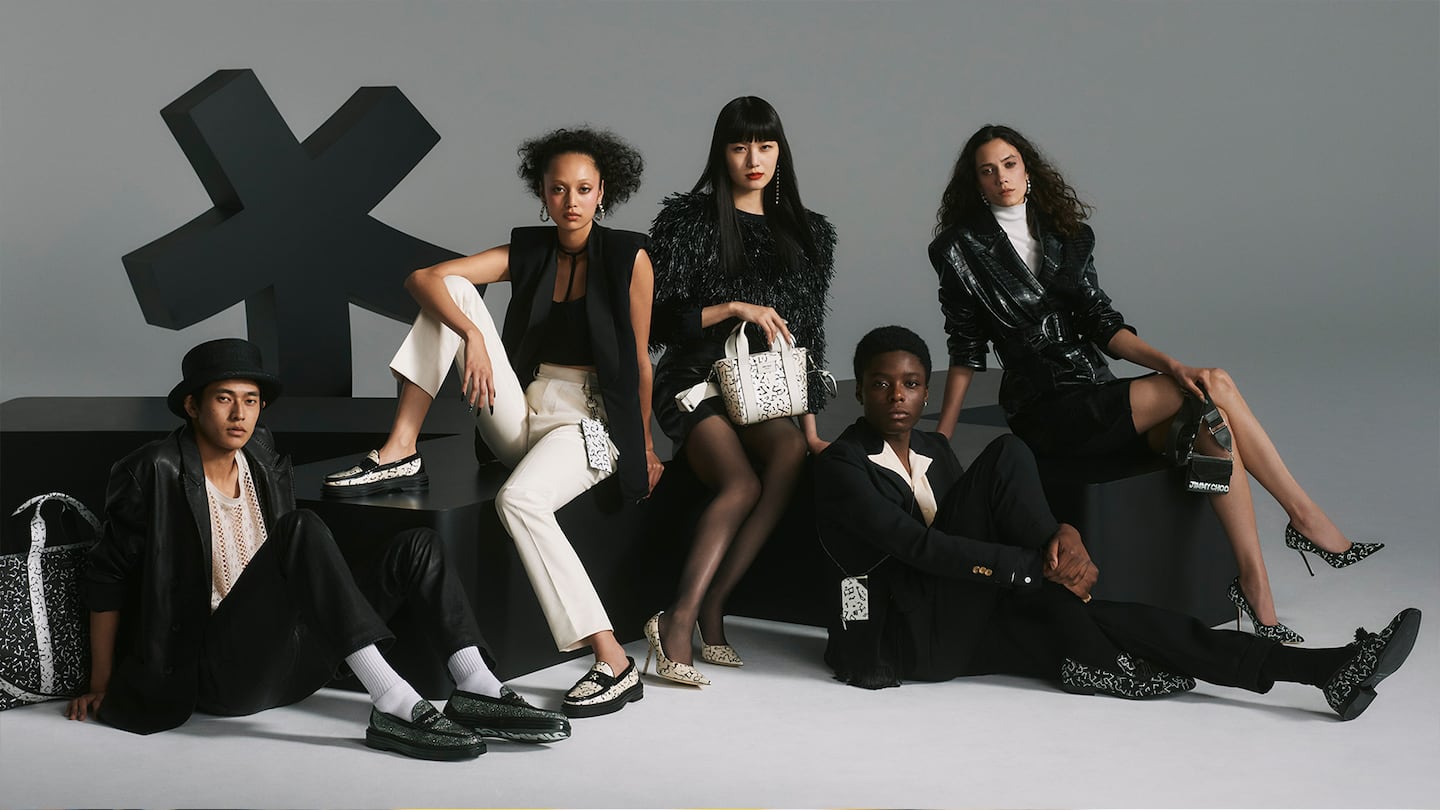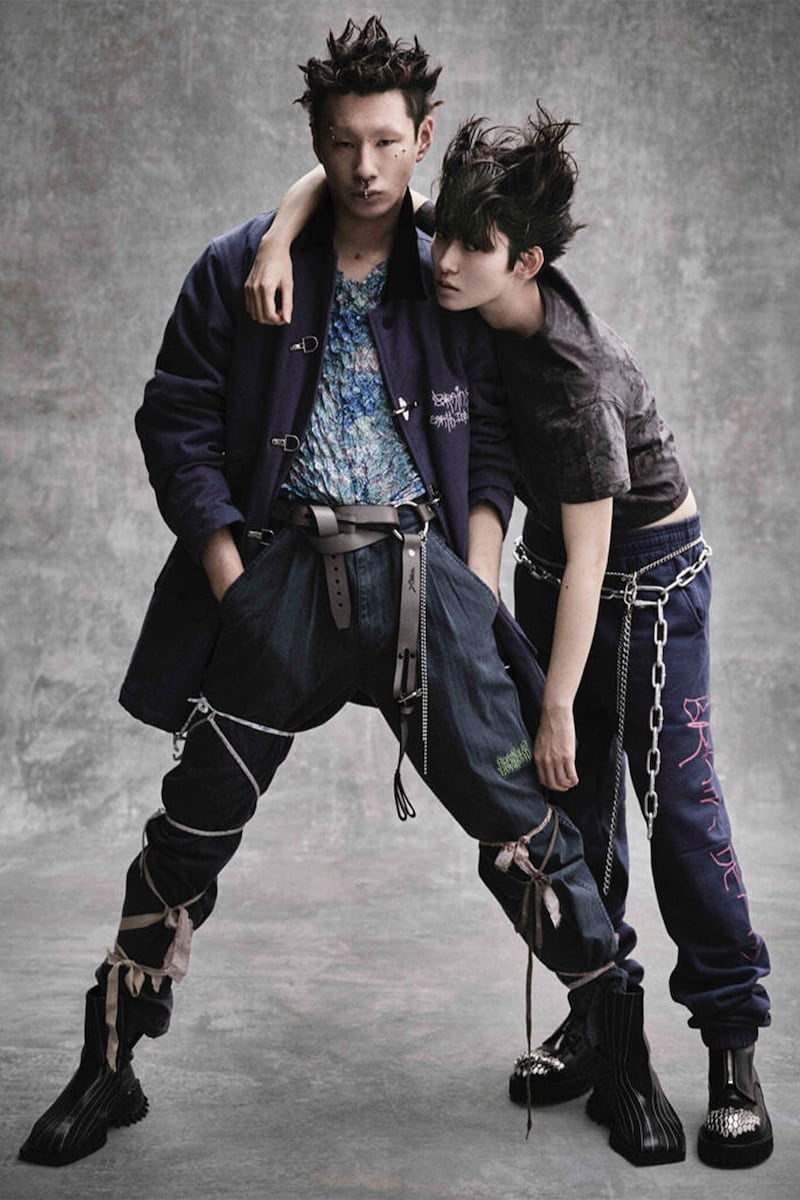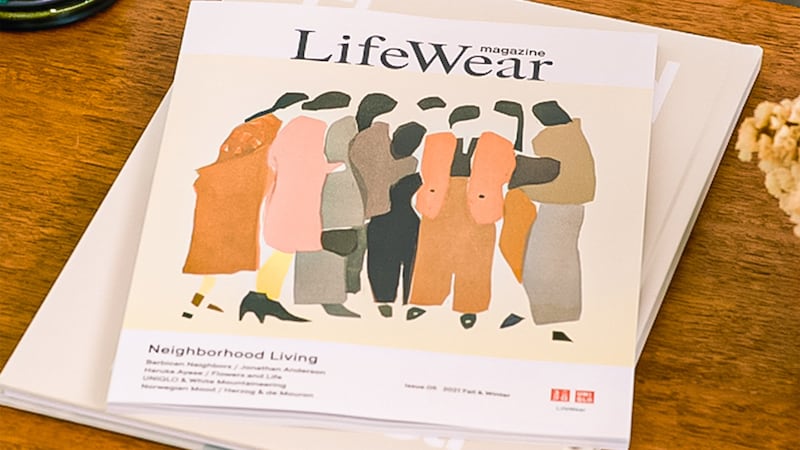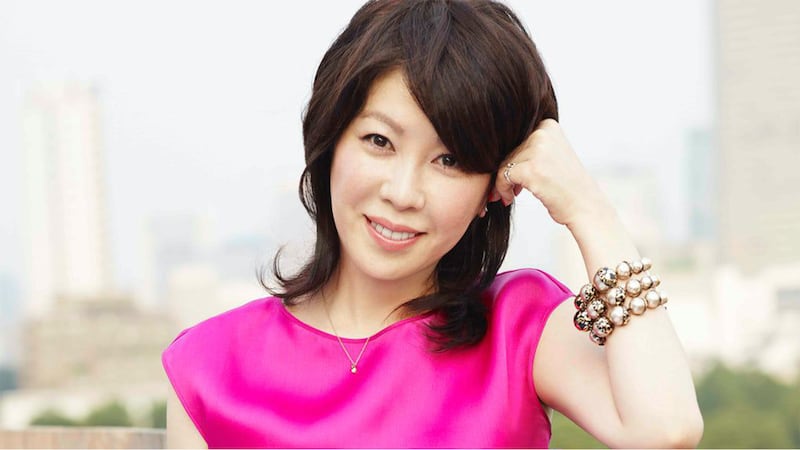
The Business of Fashion
Agenda-setting intelligence, analysis and advice for the global fashion community.

Agenda-setting intelligence, analysis and advice for the global fashion community.

KEY INSIGHTS
When it comes to fashion magazines, the Japanese publishing industry has always marched to the beat of its own drum.
Long before the launch of Japanese editions of some of the world’s most famous fashion titles from Condé Nast and Hearst, domestic publishing giants like Shueisha, Takarajimasha and Magazine House were producing innovative formats that served a host of style subcultures in a market where consumer behaviour was unique enough to keep foreign publishers second-guessing.
Over the decades, the country’s native print titles have accumulated cult followings at home and abroad, from long-running menswear fashion bibles Popeye and Men’s Non-no, to women’s titles like Ginza and lifestyle monthly &Premium. Thanks in part to their distinctive editorials and art direction, Japanese fashion magazines were somewhat insulated from the first major exodus of readers to digital channels that took place in other markets over the past two decades
ADVERTISEMENT
Also continuing to prop up demand for legacy print titles was Japan’s aging population, coupled with a surprising reticence by many in the otherwise technologically advanced country to embrace online media alternatives. Both factors explain why, in other industries such as music, physical formats like the CD remain dominant — and why e-commerce has lagged in retail.
Print magazines, which remain the mainstay of the fashion media landscape, have also benefitted from a continued devotion to papermaking, stemming from a 1,300-year-old national tradition of washi, or Japanese paper, that is still entrenched in industries from architecture to manga.
But despite these insulating forces, Japanese fashion magazines have recently been forced to start to adapt to face the new reality, with industry insiders saying that some of the shifts taking place now are long overdue.

“I’m seeing a decline but at this stage, Vogue’s still Vogue. GQ’s still GQ [in Japan],” says Hiroko Okawa, PR director and vice president of Pred PR, which counts Ambush, Off-White and Zara among its clients. “We try to allocate as much budget as we can [to print], as we want to save these magazines and believe that they still mean a lot. But I don’t know how long that’s going to last.”
Printing Through a Pandemic
Since social media platforms like Instagram started gaining popularity in Japan, a slew of magazines folded in a wave dating back to around six years ago, including CanCam’s sister title AneCan from Shogakukan, street style bible Fruits, teen-focused Zipper from Shodensha and long-running monthlies Takarajima and Cutie. The fallout from the pandemic pales in comparison, according to Joanna Kawecki, co-founder of the Tokyo- and London-based culture and design magazine Champ, but there have been casualties nonetheless.
“The pandemic has been nothing but a bad influence [on the fashion media industry],” says Takahiro Kinoshita, the veteran editor who helmed Popeye, and before it, Brutus, before departing to lead creative communications at Fast Retailing-owned Uniqlo in 2018 — a job that includes overseeing its in-house magazine, LifeWear.

In December 2020, local media outlet FashionSnap estimated that 100 magazines including many fashion titles would have been suspended by the year’s end, citing a slump in ad revenue from then hard-hit advertising agencies like Dentsu and Hakuhodo. An accelerated withdraw of print marketing budgets has added pressure across the board, not just for fashion titles. Like in most markets around the world, media buyers are invariably spending more on digital giants like Netflix and Amazon.
ADVERTISEMENT
“Advertising has [shrunk] a lot, especially after the pandemic [and] print ads are very expensive,” says Okawa. “Some [fashion] clients don’t have that kind of budget anymore. Sometimes magazines [even] say, ‘we have two pages we can give you… but few of our [independent brand] clients have print campaigns anymore. Even if it’s free.”
As a result, the printed editions of Kobunsha’s mass-market womenswear title JJ and teen girl monthly Seventeen, which launched in 1968, are now gone. Many other publications scrapped monthly cadences that proved hard to sustain, in favour of biannual or seasonal schedules.
According to a magazine buyer at a major Japanese bookstore, who wishes to remain unnamed, over 50 percent of their customers pre-pandemic were tourists. As sales continue to lag due to heightened travel restrictions over the Omicron variant of Covid-19, the business has had to shift its focus by catering to growing demand in interiors and design (as fashion and photography slump) and dedicating more shelf space to home goods.
Broadly speaking, of course, “publications still have a place in Japan,” says Kawecki. “You go into Daikanyama T-site, [for example] and there are magazines everywhere, and Casa Brutus is flying off the shelves,” she adds, referring to retailer Tsutaya’s popular bookstore in Tokyo’s chic shopping district, and Brutus magazine’s interiors and lifestyle edition.
Fashion magazines, however, are finding it harder to adapt. Some titles still don’t even have digital teams, says Okawa. Though their print content remains strong, this limits their audience to readers largely in their 30s, if not older. Meanwhile, titles targeting younger readers are shifting towards going fully digital.
A few players are leading with social media-focused strategies. Kaoru Imajo, director of Japan Fashion Week Organisation, names the Japanese editions of Hypebeast, Elle and local title Spur as examples of fashion media making concerted efforts to reach readers online through directly-operated accounts and influencers. A reticence towards digital isn’t a media-only issue, but one slowing down Japan’s wider fashion industry. “Not only the magazines but many brands are still not adapting to apps like TikTok,” Imajo adds.
For some Japanese designers, however, print magazines still mean something important. “The texture of the paper, the layout… all of these aspects affect the experience and [allow people to] see the clothing more clearly,” says Hidenori Kumakiri, founder and creative director of local brand Beautiful People, which devotes around 30 percent of its marketing budget to print and the rest to digital.
Though print ads may continue to raise brand awareness more so in Japan than in other markets, ultimately social media drives sales. “There is [a bigger] economic impact when a Youtuber or TikToker posts videos in our clothes,” says Yohei Oki, co-founder and co-creative director of up-and-coming label Shoop.
ADVERTISEMENT
Growing Leadership Vacuum
Another challenge facing Japan’s traditional fashion publishing industry is a talent crunch on two fronts. On one end, a cohort of storied editors like Popeye’s Kinoshita have bid farewell to their print posts for cushier options producing content for brands.
The appeal is obvious. “Back when I was running magazines, the toughest part of the job was [advertiser] relations, as ad income was far greater than sales income,” says Kinoshita. “You had to be very sensitive to your clients and that was the most stressful part of my job.” That’s no longer a concern at LifeWear magazine, he adds, and his content now reaches a much wider audience.

Other editors — like Seiichi Kamei, the former editor in chief of Casa Brutus who is now Hermès Japan’s vice president of communication — have also moved to the client side. Similarly, fashion’s once-powerful generation of editors in chief from the 2010s, including Vogue Japan’s Mitsuko Watanabe and Ginza’s Toshiko Nakashima, have departed. Nakashima went on to collaborate with clients including e-commerce giant Rakuten.
Vogue Japan’s appointment of its new head of editorial content, Tiffany Godoy — who has covered fashion in Japan for over two decades but is still considered new blood when it comes to the upper echelons of mainstream media — could be a sign of a broader sea-change. Though the main motivation behind the creation of the newly scoped role is to help consolidate power in the US headquarters of parent company Condé Nast as part of its global restructuring, insiders wonder whether someone new at the helm of Vogue Japan could cause a domino effect of leadership moves across the fashion media.
Some argue that the pace at which publishers are passing the baton from the older generation to younger talent is too slow to keep up with the changes facing the industry. “Most editors are 50 years old or above and didn’t grow up with social media — a lot of them haven’t been able to adapt how they make magazines for the new age,” says Takuya Chiba, founder of creative production agency Thousand and editor in chief of Silver, a magazine it publishes.
Chiba left his post as editor in chief of Grind, which he occupied for a decade, to start Thousand and Silver in 2018. Running a magazine under a major publisher like Shufunotomo (which has since gone bankrupt) with many non-fashion titles meant less financially strong players’ budgets were squeezed until it was no longer possible to fully realise his vision, he says. At Grind and Ollie magazines (which have since been taken over by media advertising firm Tryout), Chiba, now 43, was one of the youngest editors in chief in the field. But his then-peers haven’t moved on from their posts.
According to industry insiders, Japanese fashion titles’ biggest obstacles — including a lack of investment in digital initiatives, a dearth of diverse, young and risk-taking voices, and a shortage of content the new generation care about like sustainability — can be traced back to entrenched corporate hierarchies and hiring practices.
“A new position is obtained by seeing who has stayed at the company the longest; editorial staff move up the ladder only when a superior has left,” Kawecki says.

Often, younger generations are disincentivised from breaking into fashion media, unless they have a degree from a top university to make it in the door. And while western titles embrace multi-disciplinary creatives, Japanese publications tend to value specialisation. “You wouldn’t be as respected [without a specialisation]; it’s not as understood,” says Kawecki.
A Hesitant New Identity
Some of Japan’s once successful fashion magazines used to serve a function akin to catalogues, where it was normal for readers to request head-to-toe outfits in stores based on looks in editorials and photo spreads. But social media has usurped that role, and magazines that continue in that manner are becoming obsolete, says Kinoshita.
“For analogue media to survive, you need to have coverage and interviews with your own point of view. You have to be able to express things in a very unique way,” he adds.
Though dwarfed by cult publications like Popeye and legacy players like Vogue Japan, the independent magazines founded by the likes of Chiba are making this their mission. During the pandemic, Silver’s sales proved surprisingly strong. With a modest circulation of 10,000 copies, Chiba now charges 1,500 yen (around $13) per issue, nearly double what Grind sold for. “I realised that there are [still] people who take the time to read and sit with magazines — not everyone goes with the fast pace of digital media,” he says.
This chimes with the aforementioned bookstore magazine buyer, who says that sales of local fashion titles published by legacy groups are generally declining, while independent players are on the rise albeit from a much lower base.
But that’s not to say legacy titles under the likes of Condé Nast are fading from obscurity. GQ Japan and Vogue Japan are still major powerbrokers, says Imajo, due to the brand recognition of the titles with and the expansive international networks of the their respective leaders.
Meanwhile, the magazine-cum-creative agency business model Chiba adopted at Thousand — one followed by global publications from GQ China to Dazed with GQ Lab and Dazed Studio respectively — is gradually gaining momentum in Japan, allowing titles to diversify revenue streams and experiment with digital channels instead of over-relying on ad sales.
However, even those entrepreneurs pioneering new business models and opening new titles are not necessarily ready to embrace digital media. A fully virtual edition of a magazine like Silver still isn’t on the cards, says Chiba. With print, “you’re forced to sit and give [it] your undivided attention. Creating something that’s worth a person’s time is something I’ll continue doing.”
“Newspapers won’t go away, neither will vinyl records,” he says. “It’s the same with magazine culture. It will survive.” That’s not to say it will be smooth sailing: the Japanese titles that do survive to be among those defining the industry’s next chapter will mostly do so by embracing significant changes. And despite all the collective resistance, it’s only a matter of time before a disruptive digital fashion media upstart eventually emerges as a major player here.
Tokyo-based menswear title The New Order is gearing up for global expansion with the launch of a new digital platform, a London office and a host of collaborations.
At the close of Tokyo Fashion Week, BoF shines a light on the enigmatic stylists shaping how the world sees Japanese fashion.
Local streetwear brands, festivals and stores selling major global labels remain relatively small but the country’s community of hypebeasts and sneakerheads is growing fast.
This week’s round-up of global markets fashion business news also features Senegalese investors, an Indian menswear giant and workers’ rights in Myanmar.
Though e-commerce reshaped retailing in the US and Europe even before the pandemic, a confluence of economic, financial and logistical circumstances kept the South American nation insulated from the trend until later.
This week’s round-up of global markets fashion business news also features Korean shopping app Ably, Kenya’s second-hand clothing trade and the EU’s bid to curb forced labour in Chinese cotton.